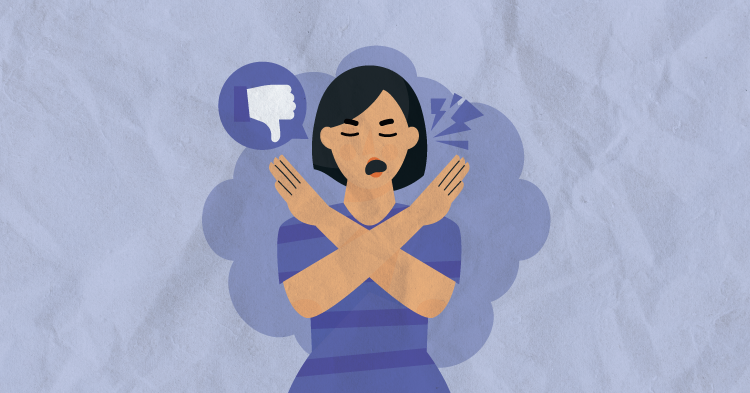Navigating Negativity: Conflict Resolution in the Classroom

Originally published January 2017
By Martha Beach
Differences of opinions are bound to happen in a diverse society. This might consist of two kids arguing about computer time, disagreements over sports team affiliations, or one student feeling hurt by another’s words. Learning how to navigate negativity is an essential part of social development.
Experiencing some conflict in the classroom may even be healthy. It is one way to help students deal respectfully with a difference in opinion, for example. They may practice overcoming fear regarding negativity, learn to share emotions, and demonstrate vulnerability.
Whatever the conflict, a teacher should act as a role model, mediator and guide to finding a resolution. Conflict-resolution skills don’t come naturally. They are learned, observed, and practiced. The classroom is a great place to safely work on these skills.
Build your student-teacher relationships
From the beginning of the year, before conflict arises, before resolution can begin, get to know your students. Watch how they interact, pay attention to social flow and patterns. Natalie Davey has taught in the Toronto District School Board (TDSB) for 15 years. She practices what she calls Five and Five: she takes five minutes at the beginning and five minutes at the end of class to talk about things unrelated to school.
“I talk about sports events, families, movies… these conversations humanize us, it creates human connection.” She garners her students’ trust and gets to know who they are inside and outside of the classroom. This way, when things get tense, she is better equipped to read the situation and more likely to successfully guide students through a resolution process.
Change the environment
“When there’s a conflict, we won’t have it out right there,” Davey says. She suggests going to a quiet place, preferably somewhere separate from onlookers. “Be socially aware, feel the energy to read the situation. Remove the kids from the space or change the environment.”
Changing the physical space and changing the mood of the space plays a large role in altering the atmosphere so people are more open and willing to try and resolve whatever the issue might be. “The physical removal, that reset, is the same for everyone from a two-year-old to a nineteen-year-old,” says Davey. “It could be push-ups, taking a walk, or sitting in a quiet room.”
Get to the core of the conflict
“Use your relationship with them to talk to them, get to the issue,” Davey advises. She spent two years teaching at a downtown youth detention facility, so she is no stranger to student disagreements and head-to-head arguments. During her tenure, Davey picked up conflict-resolution skills from social workers.
“Constant check-ins are very important.” Saying something as simple as, “How are we all feeling with this conversation?” shows students you are paying attention, demonstrates a calm way to speak, and gives them the opportunity to calmly voice concerns, fears, or other emotions. Allow each person time to speak, asking them to get back to basics: using “I” statements is simple, straightforward, and effective.
“Student voice is necessary to achieve working balances. If they don’t feel heard, they won’t respond,” says Davey. Feeling heard and listening to others is part of learning how to respect one another—and respect different opinions without hurting each other’s feelings.
It’s OK to hit pause
“Ask [kids] to stop and take a deep breath,” Davey suggests. “They’ll likely roll their eyes, but they’ll still do it.” That deep breath is a forced pause. The pause changes the environment of the mood and brings fresh oxygen to the brain. That helps calm the nervous system and reduce the stress of the moment.
“But these steps only work because of our relationship—building a good teacher-student relationship is key,” Davey stresses. During these talks, the kids aren’t the only ones who should be open to sharing. Bring up examples of your own conflicts and resolutions, things you could have done differently or things that went well. “You have to act vulnerably if you want your kids to react vulnerably.”
Don’t feel like you have to do this alone
Maybe the conflict is bigger or more complicated than it initially appeared. Maybe it’s between two students who don’t trust you or whom you don’t know very well. “I often bring in other adults, maybe others who are better able to deal with that situation,” Davey explains. “Many people hold pieces of information that can come together to make a more complete picture of the kid.”
Davey says it’s OK to let go of control, let other people in who may be able to help. “You might not be in the best relationship with that kid, but others may,” she says. “The movement toward more transparency will benefit everyone.”
Check-in with your students
“You have to follow-up,” Davey notes. Many kids need to learn this skill, it doesn’t come naturally. “You have to encourage and facilitate them to follow up, they may need explicit guidance.” Check-in with each student individually to see how the situation is now—did they have any further thoughts or emotions they want to share? Have they followed-through on actions or words that are necessary for reconciliation?
They may feel the conflict isn’t over, or they may feel they can sort it out on their own. Again, rely on your relationship with them. At a certain point, you need to be hands-off. “I have to trust my instincts and trust the kids and trust the process,” Davey says.
“Honour that the kids are human—the reactions are going to be normal. Try to remember everyone has a human story,” Davey says.
All in all, negativity and arguments are unpleasant. Change the environment, facilitate conversation, and then demonstrate and guide healthy conflict-resolution. These strategies school your students in vital social skills they will use for the rest of their lives.
Martha Beach is a graduate of Ryerson University’s journalism program. Currently, she is a freelance writer and factchecker in Toronto.
